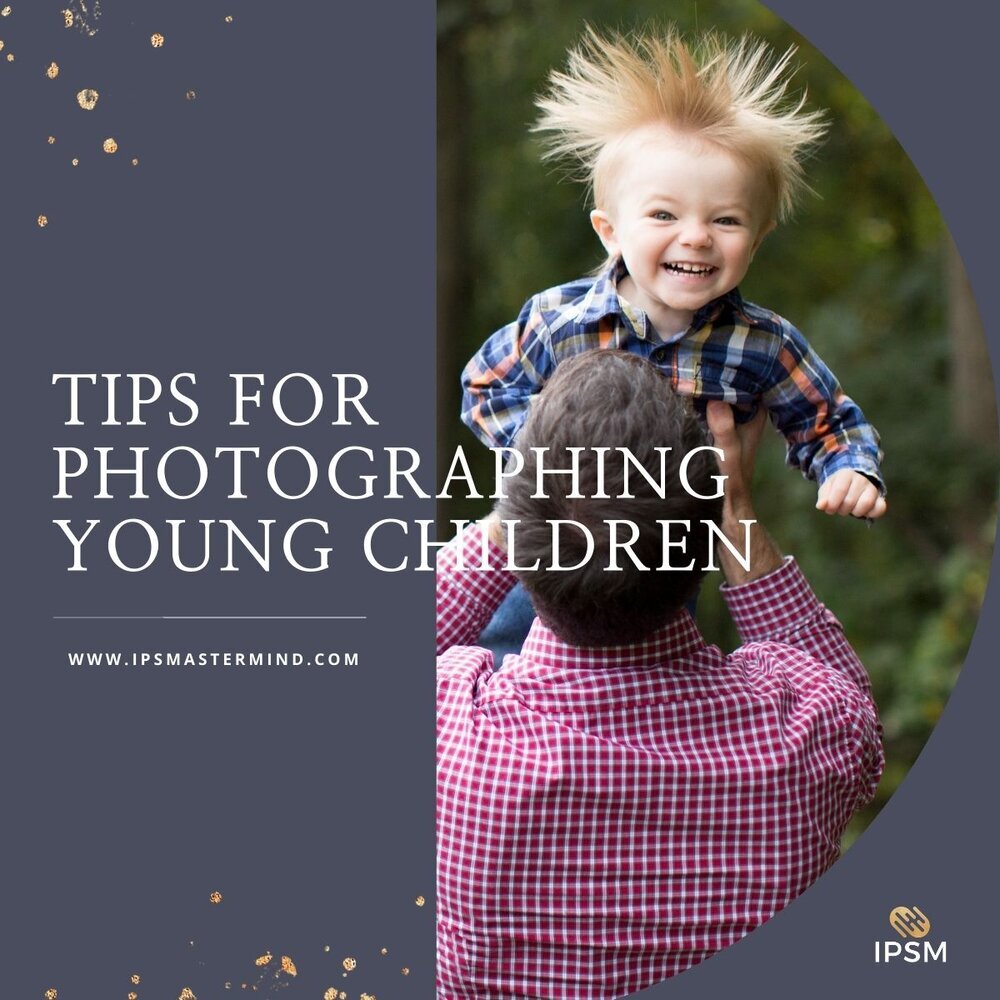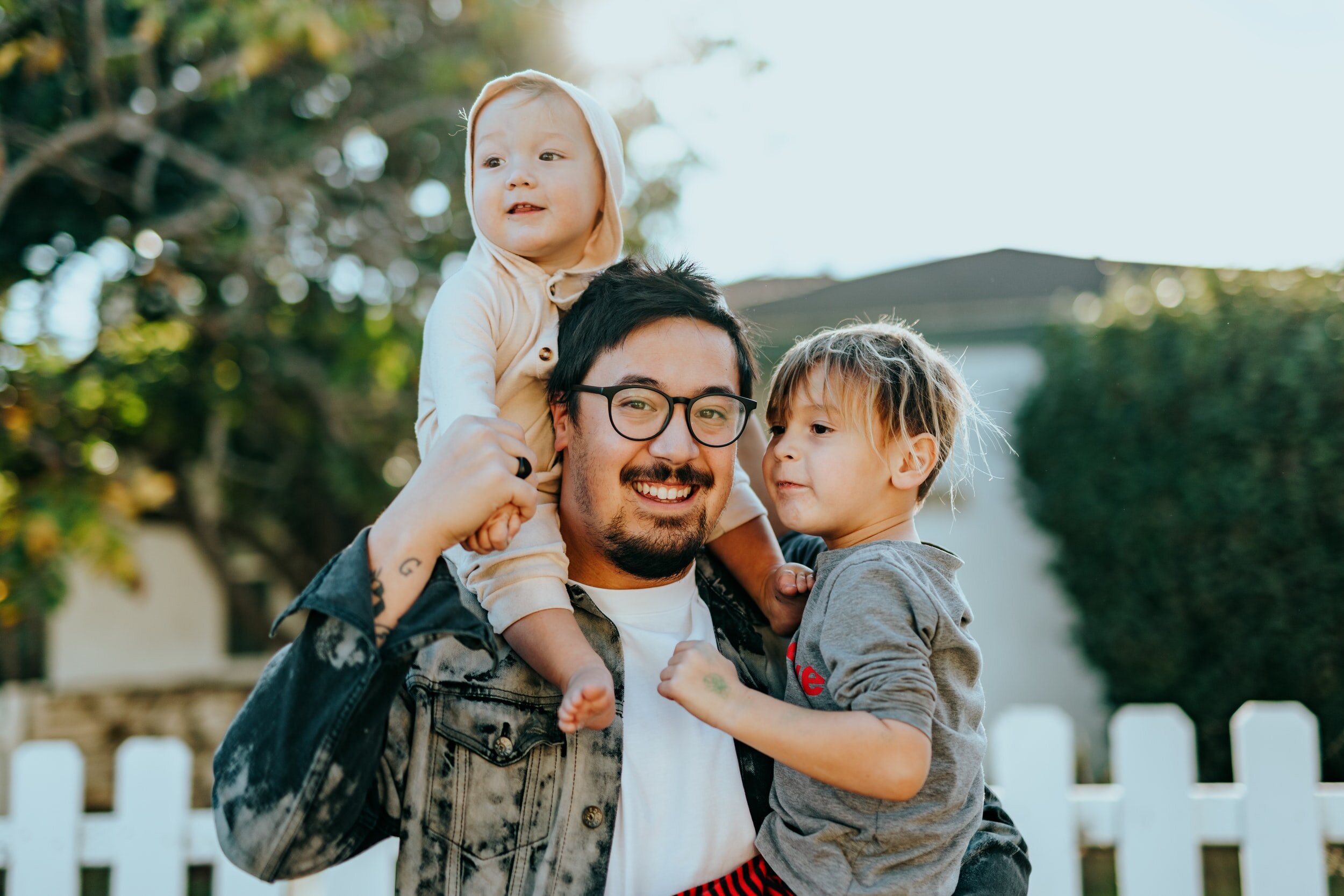Tips for Photographing Young Children
If you’ve ever photographed young children, you know they can be some of the most challenging subjects on earth. They are tiny balls of energy with a mind of their own and they may not be wild about letting you invade their personal space to get a portrait.
But it’s essential that we learn how to deal with this age group to ensure happy parents and wonderful sales.
Almost all of the families I photograph have at least one child in the 2-5 age range, so I have developed some strategies for engaging with these children and getting natural, happy expressions as quickly as possible.
Respect them
I think a lot of people can fall into the trap of “talking down” to young children, especially if they don’t have a lot of experience with kids. Some people also tend to talk over kids’ heads about them, as if they were not there. We would never do this to an adult, and I believe we shouldn’t do it to children either, if we want to earn their trust.
I introduce myself directly to young kids when meeting them: “Hi, Sophie! I’m Rachael. We’re going to have some fun today playing with Mommy and Daddy; you can even help me take some pictures with my camera!” Now, Sophie may not respond right away. More than likely, she’ll bury her head in her mom’s shoulder. But at least I’ve communicated to her in a respectful way, and given her a little idea of what to expect.
I also make a point of using my “normal” voice. I feel like kids can sense insincerity and there’s no need to raise my voice an octave when I speak with them.
2. Skip the bribes
Before the session, I coach parents NOT to bribe the kids with ice cream or a similar treat after the session. By saying, “If you’re good and smile at the camera, we can get ice cream later!” you are saying, “This experience is going to be terrible but if you just grin and bear it, I’ll give you a reward!” I’d rather that the experience itself be fun and rewarding for the child, instead of something to just survive.
I almost never use candy as a bribe during a session. It doesn’t result in real, genuinely happy smiles, for one thing, and often there are tears when the treats run out (not to mention weird faces while they are chewing). It might buy me a few minutes where they are sitting still, but won’t buy me authentic, joyful expressions, which is what I emphasize in my brand.
3. Start with posed portraits
I always start out with the posed family portraits first. I want to do these while the child is still relatively unsure about me, and is content to sit still for a few moments. If I wait till after the child has warmed up, I’ll have a lot more trouble getting her to sit still because she’ll be much more interested in running and playing.
4. Follow their lead
No matter how many family members I’m working with, I always let the preschoolers take the lead in how the session flows. If they’re happy and energetic right out of the gate, we’ll dive in with fun activities and games to get great candid pictures. If they’re feeling shy and introverted, we’ll keep things slow and gentle to start out till they warm up. If they let me know they’ve had enough, we’ll quit immediately, or at least transition to a new location and activity.
5. Don’t settle for forced smiles
At this age, fake smiles are really easy to spot, and parents generally won’t be happy with images that aren’t authentic. Skip the “cheese!” commands, and instead work hard for those genuine smiles and laughs. It’s so worth the extra time it can take!
(Tip: pre-focus on the child’s eyes, and hold the camera very steady. Then come out from behind your camera so you can make eye contact while you chat with them and make the photographs. You can get much better expressions if you are interacting with them face-to-face, rather than hiding behind a giant black box.)
6. Play lots of games
I use a huge assortment of games and activities to keep my little subjects happy and get genuine smiles. These are often made up on the spot, but here are a few examples:
– Have dad throw the child in the air. Most kids LOVE this and it makes for a cute shot.
(Tip: Tell dad that after a couple tosses he should quickly hug the child and look at the camera. The kid will still be grinning and will often look right at the camera at that moment, so this is a great trick to get a happy portrait of dad and child together, even if the kid has been grumpy up to this point.)
– Kids love running. Have mom crouch down on the ground, and tell the child to run up and give her a big hug around the neck. Encourage him to “really squish her!”
– Let the child push the shutter button on your camera. Act VERY amazed and excited when she does, “Wow! Sammy, great job!!” and jump back and get a shot when she smiles. Do this several times in a row; you’ll get a good variety of expressions.
– For slightly older children, I tell them to just press the shutter once but then I act shocked when the camera clicks a few times (I have mine set to “burst” mode): “Wha–? Hey! I told you only take ONE picture!” said in mock seriousness. They always crack up at that so I lean back and grab a quick shot.
– Ask if he’s a fast runner. Have him run toward you as fast as he can. You can shoot these action shots but also keep your eye out for the grin he’ll give you right after he stops.
– Same with jumping, spinning, or any other physical activity. The key is to be VERY amazed by their feats, so they will be proud of themselves and give you a big grin.
– Have mom and dad swing him. Grab a close-up right afterwards for a great smile.
– For little ones, play peekaboo from behind your camera.
– Let them look at the back of the camera. Kids love to see themselves in pictures and that can get an uncooperative kid engaged very quickly.
– Say, “Whatever you do, DON’T smile!” This trick often works wonders, at least for a few minutes.
– Don’t be afraid to act silly. For this shot I had his favorite blankie draped over my head and was pretending not to be able to see anything. It got the baby to laugh and to sit still for .2 seconds, which was all we needed to get this sibling shot.
– Ask if they know what sound a bear makes, then act terrified when they roar. This gets loads of laughs.
– To get their attention and eye contact, just whisper. A simple change in your tone of voice will instantly grab their attention and can bring the energy way down. I often use this trick to get siblings to be still and snuggle together. I whisper to the older one, “It’s cold – she needs a hug! Keep her warm!”
7. If all else fails, and your little subject is determined to be grumpy:
– Have them do something quiet with mommy; they may be overwhelmed and need a short break.
– Put down the camera for a while and just play with them. Pick it up again once they are more comfortable.
– Respect that they may not feel comfortable without being attached to a parent. You can still get some great shots while they are glued to mom or dad.
– Some kids get over-stimulated easily. Giving them a few minutes alone can turn a bad mood right around.
– When all else fails, take a snack break!
8. Other tips
– Remember that toddlers move fast, so these expressions come and go in an INSTANT. You have to be quick on your feet, always alert during your session, and be ready to grab these split-second expressions.
This moment looks so sweet and tender, but in reality this toddler was JUMPING all over the bed like crazy (we were being very careful he did not jump on the baby!!). I asked him to kiss the baby and he knelt down and gave him a quick peck, then went right back to trampoline tricks. Remember, you need to be fast to freeze that split second.
– It can be helpful to gather a little information about the toddler before you begin the session. In my pre-session consultations I ask the parents about her toddler’s favorite songs, TV characters, etc. This way I can more quickly enter into their world once I meet them.
– Manage mom and dad’s expectations by letting them know ahead of time what to expect. I also usually ask them not to correct the child at any point during the session. I want the child to feel as free as possible, and having mom snap, “Sit up straight! Smile at the camera!” is not going to help anything. The more relaxed mom and dad can be, the better expressions we’re going to get from the child, so I make sure we’re on the same page about that.
While photographing young children can be challenging, and often exhausting, it can also be an incredibly rewarding experience. You may end up with dirt all over your clothes and leaves in your hair, but you’ll also end up with great sales, images the parents will treasure for years, and if you’re lucky, you’ll end up with a new little friend!
What’s next?
Once you have those beautiful photographs, how do you present them so your client gets what they want and you get the profit you deserve?
I’ll show you how in my new masterclass! It’s packed with great info for growing your photography business with quick tips you can implement right away.
It’s totally free and you can watch it on demand - sign up HERE!



